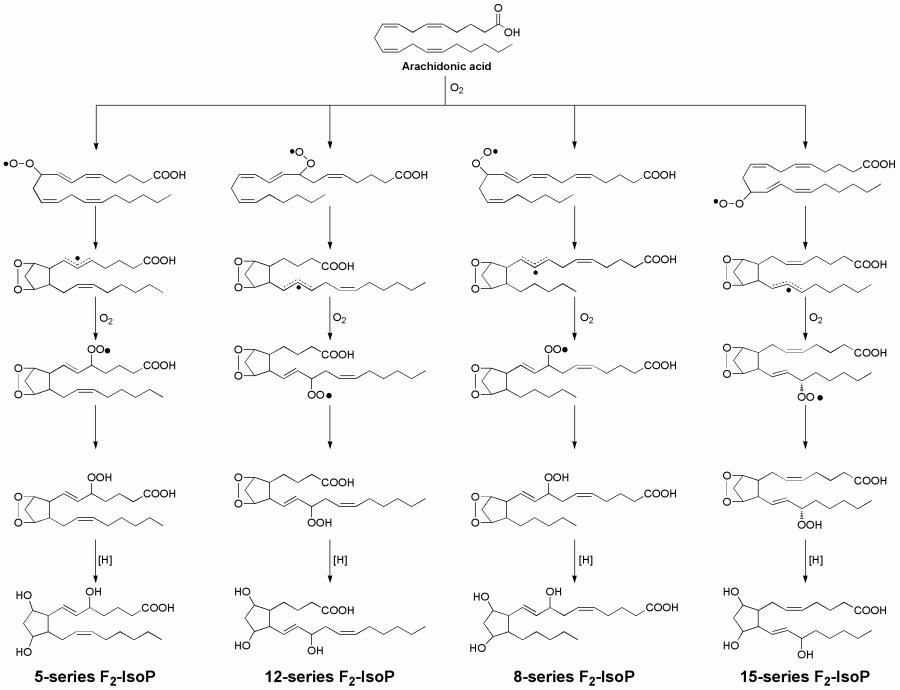The isoprostanes (IsoPs) are a unique series of prostaglandin-like compounds formed in vivo via the non-enzymatic, free radical-catalyzed peroxidation of arachidonic acid. These compounds were first discovered in the Division of Clinical Pharmacology at Vanderbilt by Drs. Jack Roberts and Jason Morrow in 1990. Over the course of the past 20 years, we and others have carried out studies defining the basic chemistry and biochemistry involved in the formation and metabolism of IsoPs. Today, one particular class of IsoPs, F2-IsoPs (shown below), is known as the "gold standard" biomarker of endogenous lipid peroxidation resulting from oxidative stress.

Because these molecules are chemically stable and have been identified in every biological matrix analyzed, measurement of F2-IsoPs has revolutionized the ability of investigators to quantify oxidant injury in vivo. In a multi-investigator study sponsored by the National Institute of Environmental Health Sciences (NIEHS), termed the Biomarkers of Oxidative Stress (BOSS) Study, it was found that quantification of plasma or urinary F2-IsoPs by mass spectrometry was the most accurate method to assess endogenous oxidative stress.
A number of mass spectrometric methods have been developed to quantify F2-IsoPs. Our laboratory uses gas chromatography/negative ion chemical ionization mass spectrometry (GC/NICI-MS) employing stable isotope dilution with [2H4]-15-F2t-IsoP as the internal standard. 15-F2t-IsoP, one abundant F2-IsoP regioisomer, and other co-eluting F2-IsoPs are quantified using this method. This approach is that originally developed by Morrow and Roberts and has been widely used in a variety of research and clinical studies. Click here to view the assay methodology as published in Nature Protocols. (Please note that the nomenclature of F2-IsoPs varies in the literature. 15-F2t-IsoP is also referred to as 8-iso-prostaglandin F2α or 8-iso-PGF2α as well as iPF2α-III.)
Importantly, normal levels of F2-IsoPs in healthy humans have been defined. Normal levels in plasma are 35 +/- 6 pg/mL while normal levels in urine are 1.6 +/- 0.6 ng/mg Creatinine. Defining these levels allows for assessment of various disease states on endogenous oxidant tone and allows for the determination of the extent to which therapeutic interventions affect levels of oxidative stress. Levels of F2-IsoPs are increased in human body fluids and tissues in many diseases and disorders including atherosclerosis and associated risk factors including smoking and obesity, ischemia/reperfusion injury, certain types of cancers, neurodegeneration, and asthma, among others. Further, antioxidant supplementation as well as lifestyle changes (ie. cessation of cigarette smoking or weight loss) have been shown to decrease levels of F2-IsoPs.
Each year the Eicosanoid Core Laboratory works with investigators around the world to quantify F2-IsoPs. If you are interested in measuring F2-IsoPs in your research, please contact Dr. Ginger Milne with any questions regarding study design, sample collection/storage, or pricing. We look forward to working with you!